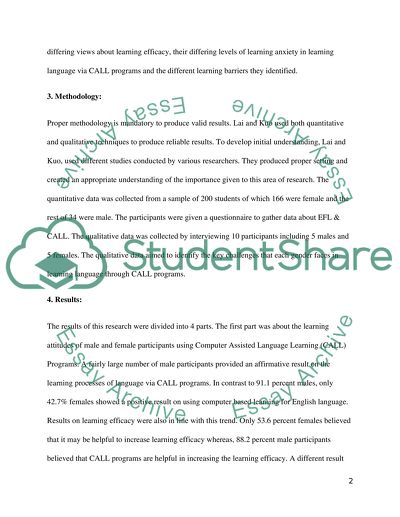Cite this document
(“Gender difference in CALL Programs for English as a second Language Essay”, n.d.)
Retrieved de https://studentshare.org/english/1391064-critique-essay
Retrieved de https://studentshare.org/english/1391064-critique-essay
(Gender Difference in CALL Programs for English As a Second Language Essay)
https://studentshare.org/english/1391064-critique-essay.
https://studentshare.org/english/1391064-critique-essay.
“Gender Difference in CALL Programs for English As a Second Language Essay”, n.d. https://studentshare.org/english/1391064-critique-essay.


